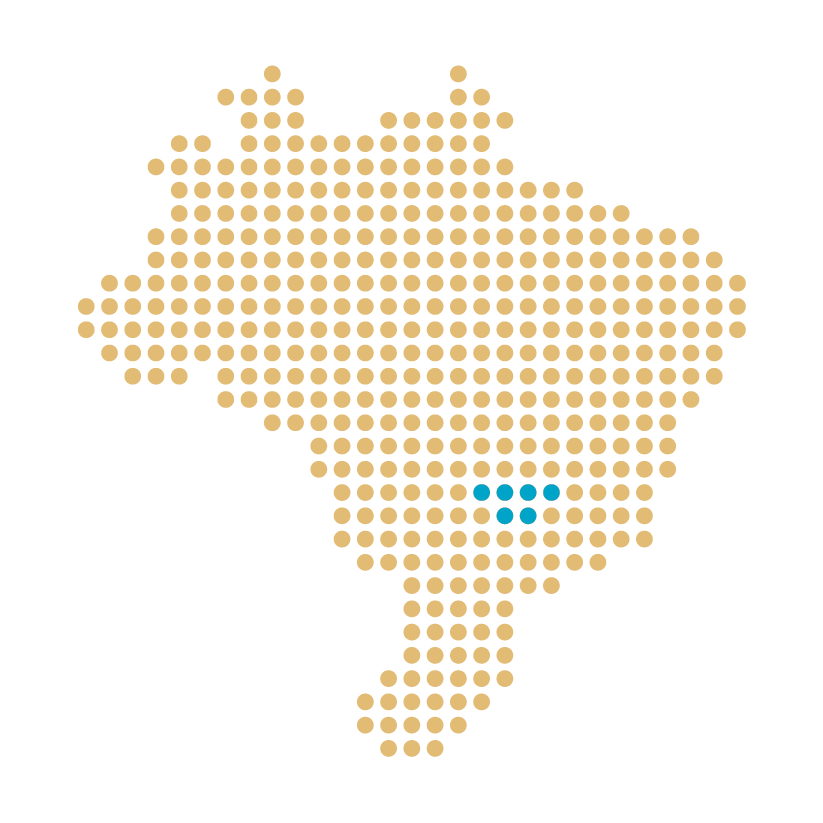Brazilian Coffee Regions
From the heart of the Amazon to the Tropic of Capricorn, from highland savannas to dense tropical jungles, Brazil's coffee regions are as diverse as the flavors they produce.
Campo das Vertentes
The rolling hills of south-central Minas Gerais are known for their crowd-pleasing coffees with distinct flavors of chocolate and caramel followed by a clean and sweet finish.
Matas de Minas
The Brazilian Atlantic Forest in eastern Minas Gerais is home to thousands of small-holder growers who produce balanced citric and sweet coffees with floral notes in the nose.
Sul de Minas
The heart of worldwide coffee production, Sul de Minas is a vast coffee region comprising many microclimates and smaller regions such as Mantiqueira de Minas and Campo das Vertentes.
Cerrado Mineiro
The Cerrado Mineiro is a high-plain savannah in western Minas Gerais with a long, dry harvest season—ideal conditions for growing sweet, chocolaty and full-bodied, naturally processed coffees.
Matas de Rondônia
The Amazon Rainforest in the state of Rondônia is home to the production of Fine Robusta coffees that are both environmentally sustainable and a source of income to the indigenous populations.
Vale da Grama
The rugged terrain and volcanic soils that surround São Sebastião da Grama in northern São Paulo are home to some of Brazil’s most prized coffees, noted for lime acidity balanced with caramel sweetness.
Chapada Diamantina
The Chapada Diamantina mountains rise above the arid lands of central Bahia, creating a cool microclimate with high rainfall and mineral-rich soils, ideal for producing clean and complex coffees.
Montanhas do Espírito Santo
The Caparáo mountains in western Espírito Santo ascend from the coastal plain to some of the highest altitudes in Brazil, resulting in coffees with bright citric acidity and complex sweetness.
Mantiqueira de Minas
In southern Minas Gerais, the high altitudes, rich soils and abundant water of the Mantiqueira Mountains, combined with generations of coffee know-how, result in coffees that are bright, clean and sweet.
Norte Pioneiro do Paraná
One of a few geographies to produce coffee outside the tropics. Seasonal variations combined with terra roxa, or fertile red soils, create a unique climate for producing sweet and creamy coffees.











